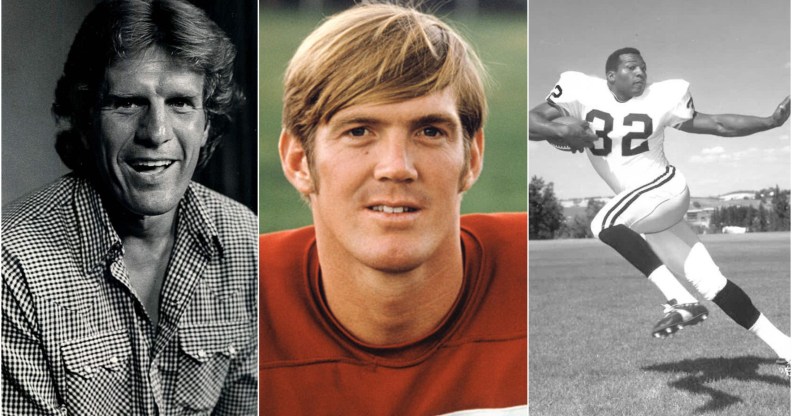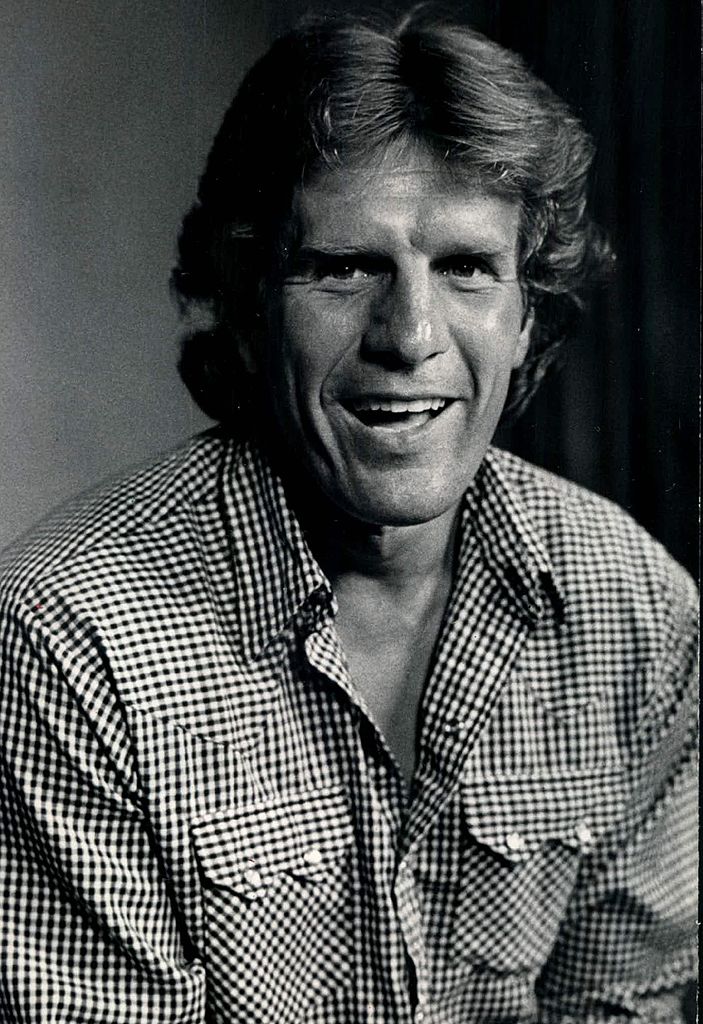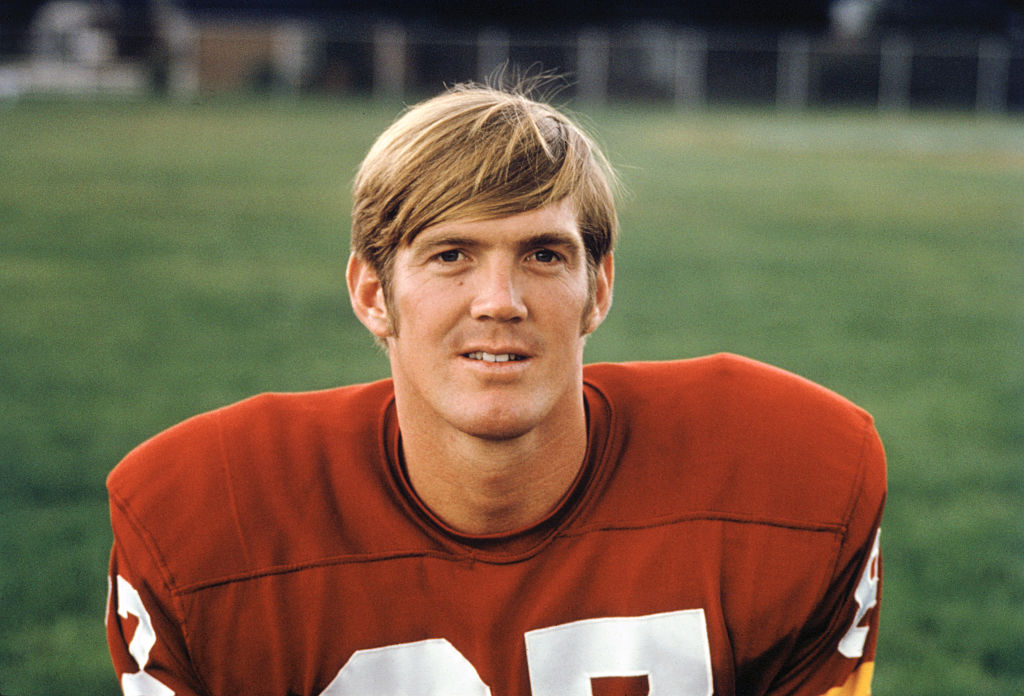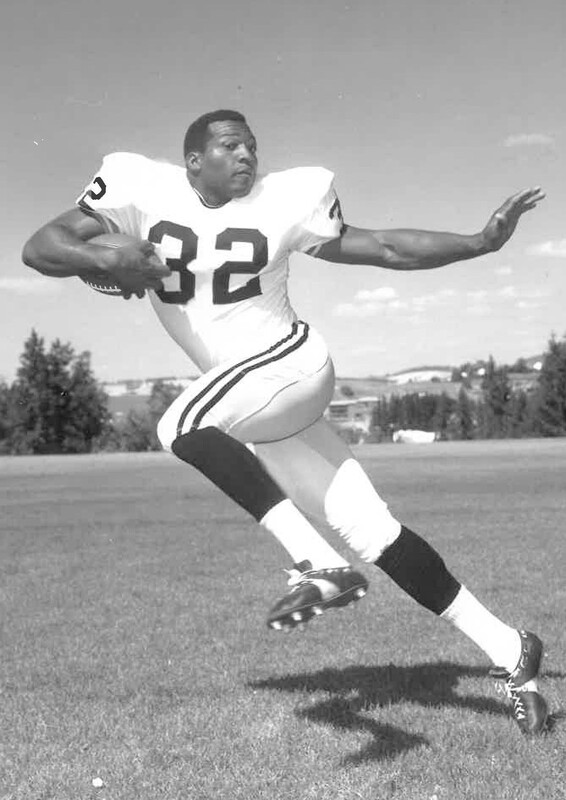The incredible life stories of three gay NFL players who paved the way for Carl Nassib

From right to left, photo shows gay NFL players Dave Kopay, Jerry Smith and Ray McDonald (Getty/University of Idaho)
Former Las Vegas Raiders star Carl Nassib made history during Pride month in 2021 when he came out as gay.
“I actually hope that, one day, videos like this and the whole coming-out process are just not necessary,” he said in a post on Instagram. “But until then, I’m going to do my best, and my part, to cultivate a culture that’s accepting, that’s compassionate.”
Having also played for the Cleveland Browns and Tampa Bay Buccaneers, Nassib announced his retirement from the NFL last September.
Many people believe that Nassib was the first player to come out, but that’s far from the case. Sure, he was the first to come out while on the sport’s regular season roster, but the title of “first” actually goes to Dave Kopay, who revealed his gay identity 26 years earlier, three years after retiring.
What’s more, in 1969 Kopay was on the same team as two other gay NFL football players, training under the legendary (and open-minded) Washington coach Vince Lombardi. He also played for the San Francisco 49ers, Detroit Lions, New Orleans Saints and the Green Bay Packers.
To date, there have only ever been 16 out gay or bisexual NFL players – hardly any, in the grand scheme of things, especially when you think about the huge number of footballers who have donned a uniform since the NFL was founded in 1920.
There are undoubtedly more players who never came out, but sadly that means their stories are lost in the mists of time.
Thankfully, we do know the incredible, powerful and heart-wrenching stories of three players. Two lost their lives during the Aids crisis, but all of them were truly talented.
These are the stories of running back Dave Kopay, who played between 1964 and 1972, Jerry Smith (1965-77), a tight end with Washington, and Ray McDonald (1967-68), a running back, also for Washington.
Dave Kopay
Dave Kopay was the first professional team sport athlete ever to declare his homosexuality. He made the announcement in 1975, three years after his retirement, following a nine-year NFL career.
He played for five teams during his career: San Francisco, Detroit, Washington, New Orleans and Green Bay. After he came out, he tried to get into coaching, but he claims that NFL and colleges expressed no interest after his sexuality became public knowledge.

Kopay spent a lot of his younger years denying his sexuality. He joined the Theta Chi fraternity when he arrived at the University of Washington, and it was at the there that he says met the man he now calls the great love of his life. But he was still very much in the closet, and trying to deny who he really was. After all, this was the early 1960s, when declaring he was gay would have essentially ruined his prospects.
Describing that time to the University of Washington Magazine, he said: I was never thinking I was a gay man because I just wasn’t like ‘one of them’. Just talking about it like that almost reinforces the utter bullsh*t that society uses to identify gay folks.
“I didn’t have the knowledge or strength to take it on then, and even after I did take it on, there were many, many times that it almost consumed me and took me into deep depression.”
Letters from fans helped him to find the strength to carry on, the former running back explained.
Kopay is alive and well. He became a Gay Games ambassador, and was a featured announcer in the opening ceremony for Gay Games VII, in Chicago in July 2006.
Jerry Smith
In 1986 Kopay revealed, in his autobiography, a brief affair with fellow NFL star Jerry Smith, who played for Washington (then the Redskins, but now called the Commanders) from 1965 to 1977, playing in a losing Super Bowl team in 1973 – although he didn’t name Smith at the time.
Tight end Smith kept his sexuality very private, focusing on his career. After officially retiring at the end of the 1978 season, he quietly came out as gay to a few family members. He moved to Austin, Texas, where he co-owned a gay bar called The Boathouse.

In 1986, Smith revealed that he had contracted AIDS, hoping to bring awareness about the disease and de-stigmatise it – a brave move as, at the time, the prevailing belief was that it was an illness that only affected “drug addicts and hairdressers” as Jim Graham, director of the Whitman-Walker Clinic, put it in an interview with the Washington Post in 1986.
Smith’s teammates all visited him as he lay in a Maryland hospital. He died, aged 43, on October 15, 1986, of an AIDS-related illness, a year after being diagnosed with HIV. Twenty-three players from Washington’s 1973 Super Bowl team reunited for the funeral, with several, including Sonny Jurgensen, Charley Taylor and Bobby Mitchell, serving as pallbearers.
“I don’t know how many of the players even knew he was gay, but I’ll tell you one thing: if they had known, they wouldn’t have cared,” Jurgensen has said.
Ray McDonald
As it turns out, Washington had not one, not two, but three gay men on the roster in 1969. The third was Ray McDonald, who had studied at the University of Idaho.
Questions about McDonald’s sexuality are believed to have started late in his college career, with rumours spreading that he was seeing a man at Washington State University, about 10 minutes from Idaho’s campus.
He went on to be drafted by Washington and during the rookie talent show at a training camp in 1967, McDonald delighted some with his singing skills, while others, it’s said, raised their eyebrows.

At the time, Washington was coached by the now-legendary Vince Lombardi, who was no stranger to the LGBTQ+ community: his brother was gay, and many former players say he knew some of his team were gay. Not only did he not have a problem with it, but he also went out of his way to make sure no one else would make it a problem.
“Lombardi, when he came, understood that Ray McDonald was gay,” the coach’s biographer David Maraniss told NFL Network.
“Lombardi wanted to give him every benefit of the doubt and every chance and said if he found out that any coach was challenging McDonald’s manhood, they [would] be fired immediately.”
Former running back A.D. Whitfield, who played for Washington between 1966 and 1969, agreed that McDonald’s sexuality was something of an open secret.
“People more or less knew he was gay,” he said. “In the first year, there were all kinds of stories about incidents around town.”
One of the biggest incidents was when McDonald was reportedly arrested for having sex with another man in public.
Running back McDonald died on May 4, 1993, three days before his 49th birthday. His obituary in the Lewiston Tribune cited the cause of death as sickle cell anaemia, but it was later revealed to be from an AIDS-related illness.
It’s tragic that none of these great athletes felt they could come out during their career, but their legacy lives on through players like Carl Nassib.
